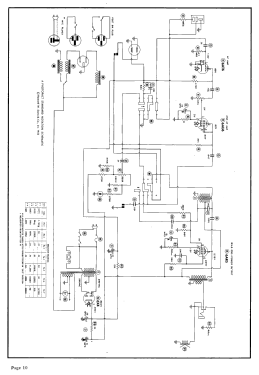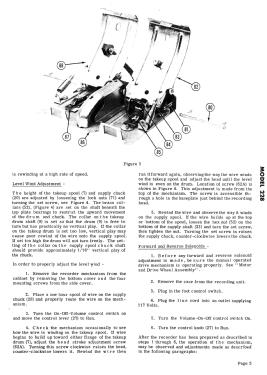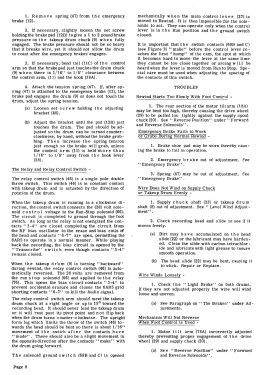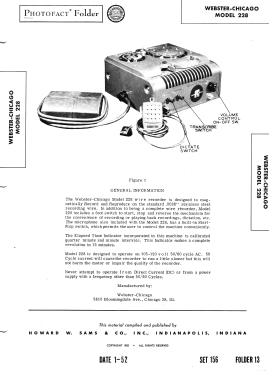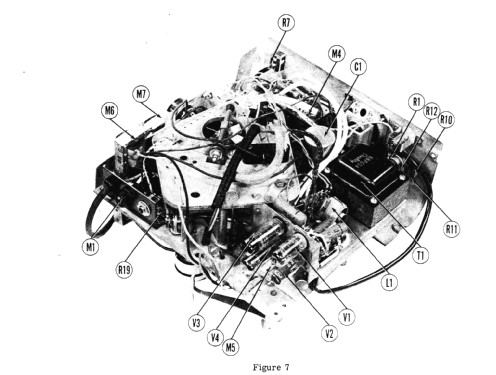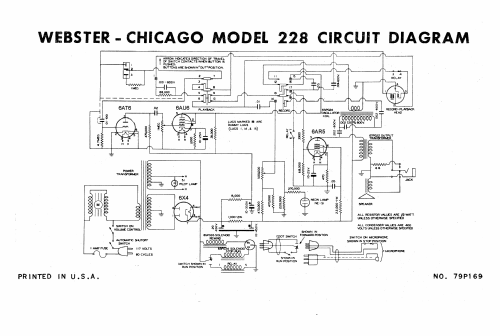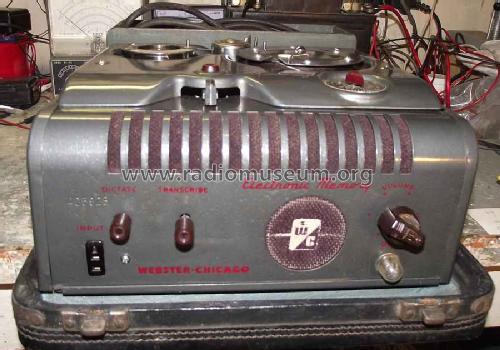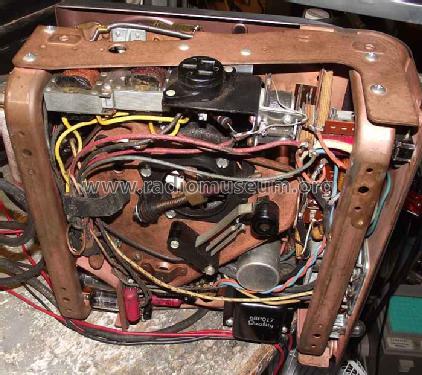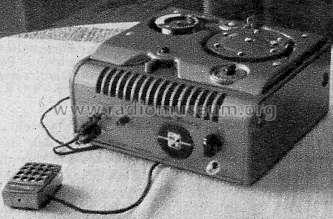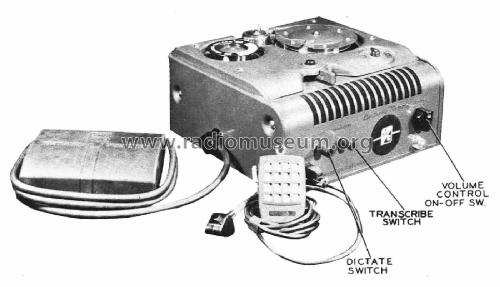Wire Recorder 228
Webster Co., The, Webster-Chicago, Webcor; Chicago (IL)
- País
- Estados Unidos
- Fabricante / Marca
- Webster Co., The, Webster-Chicago, Webcor; Chicago (IL)
- Año
- 1952 ?
- Categoría
- Registrador o reproductor de sonido o visual
- Radiomuseum.org ID
- 98819
-
- Brand: Webcor
Haga clic en la miniatura esquemática para solicitarlo como documento gratuito.
- Numero de valvulas
- 4
- Principio principal
- Amplificador de Audio
- Gama de ondas
- - no hay
- Especialidades
- Grabador y/o reproductor de hilo
- Tensión de funcionamiento
- Red: Corriente alterna (CA, Inglés = AC) / 60 Hz, 117V = 110 -120 Volt
- Altavoz
- Altavoz dinámico (de imán permanente)
- Material
- Metálico
- de Radiomuseum.org
- Modelo: Wire Recorder 228 - Webster Co., The, Webster-
- Forma
- Sobremesa apaisado (tamaño grande).
- Anotaciones
-
The Webster-Chicago model 228 wire recorder is designed to magnetically record and reproduce on the standard .0036" stainless steel recording wire. In addition to being a complete wire recorder, model 228 includes a foot switch to start, stop and reverse the mechanism for the convenience of recording or playing back recordings, dictation, etc. The microphone also included with the model 228, has a built-in start-stop switch, which permits the user to control the machine conveniently.
- Mencionado en
- Funk-Technik (FT) (6/1952)
- Documentación / Esquemas (1)
- Riparazioni - Scuola Radio Elettra
- Documentación / Esquemas (2)
- Photofact Folder, Howard W. SAMS (Set 156, folder 13, dated 1-52)
- Autor
- Modelo creado por un miembro de A. Ver en "Modificar Ficha" los participantes posteriores.
- Otros modelos
-
Donde encontrará 441 modelos, 209 con imágenes y 363 con esquemas.
Ir al listado general de Webster Co., The, Webster-Chicago, Webcor; Chicago (IL)
Museos
El modelo Wire Recorder se puede ver en los siguientes museos.
Contribuciones en el Foro acerca de este modelo: Webster Co., The,: Wire Recorder 228
Hilos: 1 | Mensajes: 1
Dear colleagues,
I recently had one of these beautiful machines in for a minor service. After getting it to work, I naturally went on to play one of the reels. (It was a recording of the "Bing Crosby Show" taken from a Voice of America broacast. All went well, and at the end of the recording I rewound it. On playing it again, disaster! the wire had jammed between the bulk of the winding and the side of the reel, because the rewinding process had been uneven due to bailer misalignment. I should have inspected the reel before playing to make sure it was tightly wound and, more importantly, even. Alas, this cost me many minutes of the recording, as the resulting tangle was too complicated to undo.
The bailer should move up and down smoothly and wind evenly on the reels. I hope this note saves someone else from making the same mistake.
Regards - Bryce
PS - The neon light serves as a recording level indicator- not an indication that power has been applied.
Bryce Ringwood, 15.Apr.11
